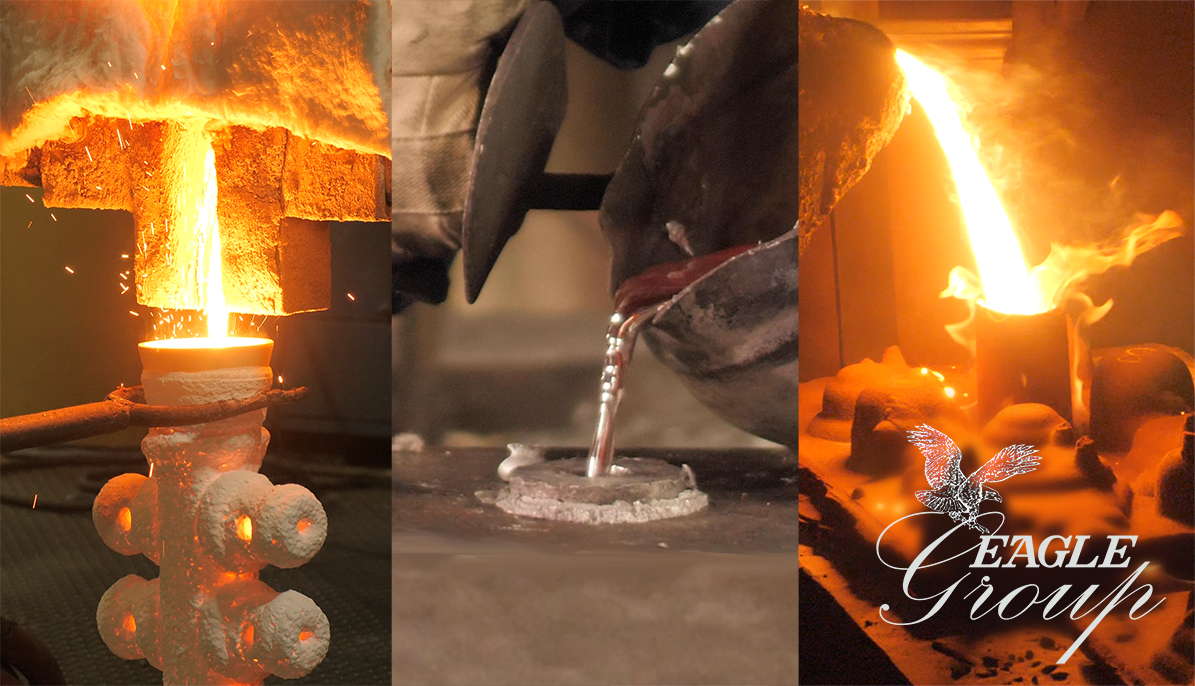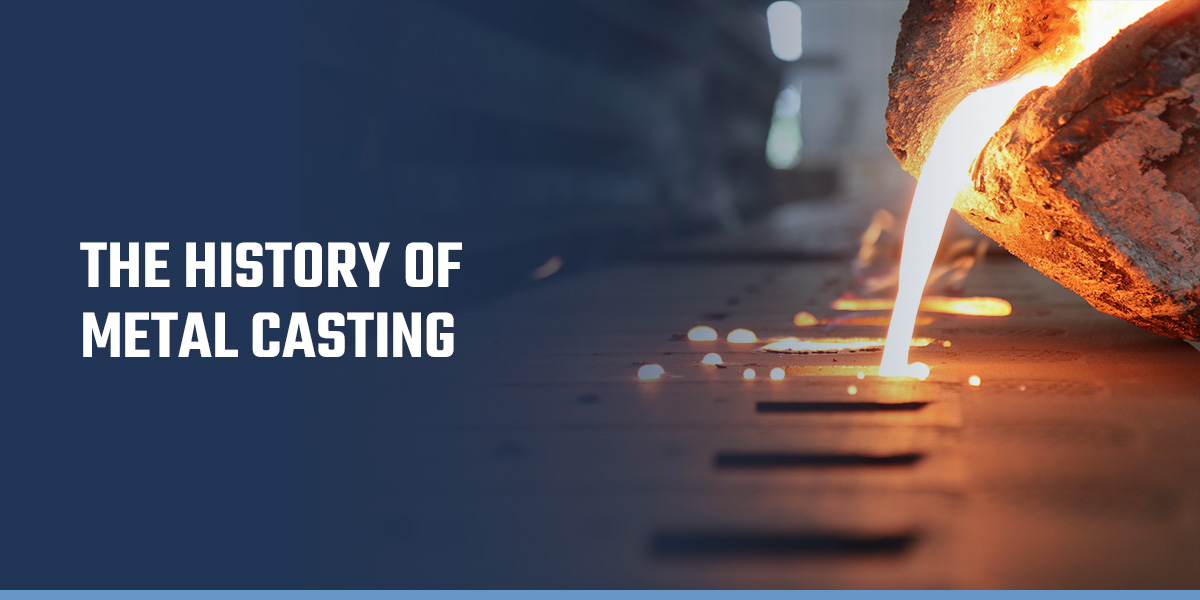The evolution of Metal Castings in advanced manufacturing
Wiki Article
Recognizing the Metal Castings Process: A Comprehensive Overview for Beginners
The Metal Casting process is a fundamental technique in manufacturing that changes molten metal into solid types. Beginners have to realize the different methods entailed, such as sand casting and pass away spreading. Recognizing the products, style principles, and safety and security measures is similarly important. Each facet plays a crucial duty in attaining successful outcomes. As one browses these details, the inquiry of just how to maximize each step for boosted results comes to be progressively pertinent.The Essentials of Metal Casting
Metal Casting has actually developed over centuries, its fundamental principles continue to be essential and consistent to the manufacturing process. At its core, Metal Casting entails the makeover of molten metal into strong things via various methods. The procedure starts with the production of a mold, which defines the form of the last item. Once the mold is prepared, metal is warmed to its melting factor and poured into the tooth cavity. After cooling down, the metal solidifies, taking the form of the mold.There are several casting techniques, including sand spreading, financial investment casting, and pass away casting, each with distinct benefits and applications. The option of strategy relies on factors such as production quantity, material type, and preferred accuracy. Once cast, the final product may undertake extra procedures like machining or surface area therapy to accomplish the needed finish and specs. Recognizing these essentials is vital for anybody curious about the area of Metal Casting.

Recognizing Materials Utilized in Steel Casting
Products play a necessary role in the Metal Casting procedure, affecting the final item's buildings and performance. Different steels are used, including light weight aluminum, bronze, steel, and iron, each offering unique features suited for particular applications. Light weight aluminum is corrosion-resistant and lightweight, making it excellent for automobile components. Iron, specifically cast iron, is favored for its exceptional wear resistance and durability. Steel supplies high strength and adaptability, commonly made use of in heavy machinery elements. Bronze, understood for its corrosion resistance and machinability, is typically utilized in marine applications.In addition to the metals, different casting products, such as sand, plaster, and ceramic, are made use of to develop mold and mildews. Sand spreading, the most widespread method, uses silica sand due to its thermal stability and capability to develop complex shapes. Plaster and ceramic molds provide finer information however may require more complicated processes. The option of products straight influences the effectiveness, cost, and quality of the spreading procedure.
The Layout Process: From Concept to Plan
The style process in Metal Casting begins with the first idea advancement, where ideas are produced and reviewed. This is followed by the application of CAD modeling techniques, enabling accurate visualizations of the design. The plan completion steps ensure that all requirements are precisely documented for manufacturing.First Principle Advancement
Initial principle development notes a crucial phase in the Metal Casting process, where ideas change right into concrete designs. Throughout this phase, designers team up with stakeholders and engineers to brainstorm and fine-tune initial ideas. They consider aspects such as functionality, appearances, and manufacturability, guaranteeing that the layout satisfies the required specs and efficiency standards. Sketches and outlines are developed to visualize the ideas, permitting preliminary analyses of feasibility and cost-effectiveness. This stage additionally involves recognizing products and prospective spreading methods that align with the layout goals. Eventually, first principle development prepares for a complete plan, guiding the subsequent phases of the spreading process and making sure a successful shift from principle to truth.CAD Modeling Techniques
Changing principles right into precise layouts, CAD modeling techniques play a crucial role in the Metal Casting procedure. These strategies make use of innovative software program to produce detailed three-dimensional models that precisely show the desired product. By using tools such as parametric modeling, solid modeling, and surface modeling, designers can control dimensions and shapes easily. CAD systems additionally assist in simulation and analysis, allowing for the identification of possible defects prior to manufacturing starts. This aggressive approach reduces material waste and maximizes the layout for manufacturability. In addition, CAD versions can be conveniently changed, enabling quick versions based upon comments. Fundamentally, CAD modeling offers as the backbone of the style procedure, connecting the gap in between initial principles and the eventual production-ready designs.Blueprint Finalization Steps
Adhering to the creation of comprehensive CAD designs, the following phase includes blueprint completion, which is crucial in converting electronic designs right into actionable strategies for manufacturing. This process starts with evaluating the CAD designs for accuracy and compliance with specifications. When verified, the measurements, tolerances, and product specs are meticulously described to ensure quality. Integrating notes and notes assists interact vital info relating to spreading procedures, surface area coatings, and assembly needs. The wrapped up plan goes through an extensive authorization process, usually involving cooperation with designers and production groups to deal with any type of possible issues. Revisions are made and authorizations obtained, the blueprint is officially released, offering as the foundational paper for the succeeding phases of Metal Casting, including pattern making and mold layout.The Steel Casting Techniques Explained

Metal Casting strategies incorporate a range of methods made use of to form liquified metal right into preferred types. These techniques vary according to the kind of material, complexity of the layout, and production volume. Sand spreading is one of one of the most usual approaches, involving the production of a mold and mildew from sand to hold the molten steel. Investment spreading, or lost-wax casting, permits detailed styles by making use of a wax pattern that is disappeared. Pass away casting utilizes high-pressure shot of liquified metal right into a mold, ideal for mass manufacturing. Various other techniques consist of irreversible mold spreading, which uses recyclable mold and mildews, and centrifugal casting, where rotational forces aid in loading the mold. Each strategy has its applications and benefits, making it important for makers to choose the ideal approach based on their certain needs and demands. Understanding these strategies is crucial for any person included in the Metal Casting process.
Ending Up Processes: Enhancing Your Casted Item

Completing procedures play an essential duty in improving the quality and look of casted items. Different surface therapy techniques, such as sprucing up and coating, are used to enhance durability and looks. In addition, high quality inspection approaches ensure that the final item meets specified standards and efficiency requirements.
Surface Area Therapy Strategies
A variety of surface area treatment methods play a vital role in improving the high quality and long life of casted products. These methods consist of techniques such as shot blasting, brightening, and finish. Shot blasting successfully removes surface blemishes, improving the practical and aesthetic characteristics of the spreading. Polishing supplies a smooth coating, which is especially important for ornamental applications and parts requiring marginal rubbing. Layer methods, such as electroplating or powder covering, deal extra protection versus get redirected here corrosion and wear, ensuring durability. In addition, surface area treatments can improve adhesion for subsequent processes, such as paint or bonding. By utilizing these methods, makers can achieve remarkable surface area quality, which is critical for click site the performance and life-span of Metal Casting in different applications.Top Quality Inspection Approaches
Effective high quality inspection techniques are vital for ensuring the honesty and efficiency of casted items after the ending up procedures. Numerous strategies are utilized to assess the quality of Metal Casting, including aesthetic inspection, dimensional checks, and non-destructive screening (NDT) Aesthetic evaluation enables for the identification of surface area defects, while dimensional checks ensure that products fulfill defined tolerances. NDT methods, such as ultrasonic screening and radiographic assessment, offer much deeper insights into interior honesty without harming the castings. Additionally, mechanical screening, such as tensile and solidity examinations, reviews product residential properties - Aluminum Foundry. By utilizing a combination of these techniques, manufacturers can boost product high quality and dependability, ultimately bring about greater customer satisfaction and minimized production pricesSecurity Considerations in Metal Casting
While the Metal Casting procedure supplies numerous benefits, it also offers a series of safety and security hazards that have to be very carefully handled. Employees in casting facilities are exposed to high temperature levels, liquified steels, and dangerous materials, which can result in serious injuries if proper precautions are not taken. Personal safety devices (PPE) such as heat-resistant gloves, deal with guards, and safety clothes is essential to lessen risks.Additionally, the existence of fumes and dust requires proper ventilation systems to assure air high quality - Aluminum Foundry. Normal training on safety protocols is vital for all workers to recognize prospective dangers and respond successfully. Emergency procedures should be developed, including fire safety and security steps and emergency treatment accessibility. Maintenance of tools find more and appropriate handling of products better add to a much safer working setting. By prioritizing these security considerations, Metal Casting operations can shield their workforce and preserve reliable manufacturing procedures
Often Asked Concerns
What Are the Environmental Impacts of Metal Casting?
Metal Casting can lead to environmental influences such as air and water contamination, source depletion, and energy consumption. Furthermore, inappropriate waste administration and exhausts from foundries add to ecological disruptions and wellness threats for close-by neighborhoods.How Do I Pick the Right Metal for Spreading?
To select the right metal for casting, one need to take into consideration variables such as mechanical buildings, corrosion resistance, thermal conductivity, and expense. Assessing the intended application and environmental problems is essential for optimal choice.What Are the Usual Problems in Metal Casting?
Common flaws in Metal Casting consist of porosity, shrinking, sand inclusion, and misruns. These concerns often develop from inappropriate product selection, poor design, or problems in the spreading procedure, affecting the last product's high quality and efficiency.
Just How Can I Boost My Metal Casting Skills?
To enhance Metal Casting skills, one need to practice constantly, research spreading strategies, examine previous projects for problems, seek comments from experienced wheels, and constantly try out various materials and approaches to enhance effectiveness and understanding.What Is the Expense of Beginning a Steel Spreading Service?
Beginning a steel casting service typically calls for a first financial investment of $5,000 to $50,000, depending upon devices, products, and facility expenses. Elements like place and scale can greatly influence overall start-up expenditures.The Metal Casting process is a fundamental method in producing that transforms molten steel right into solid forms. Beginners need to understand the different approaches involved, such as sand spreading and pass away casting. There are a number of casting methods, including sand casting, investment casting, and pass away spreading, each with one-of-a-kind benefits and applications. Investment casting, or lost-wax spreading, permits for detailed styles by using a wax pattern that is thawed away. Various other techniques include permanent mold and mildew casting, which uses recyclable mold and mildews, and centrifugal spreading, where rotational pressures aid in filling the mold.
Report this wiki page